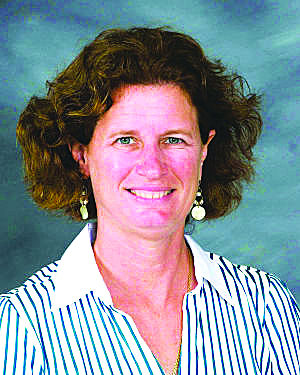If you ever had a lefty in your family, you know how it is to wonder which hand your own child will choose. The teacher knew what that was like as her husband was a lefty and her father was ambidextrous. Surely one of her two children would be a lefty.
Nope, neither child chose that hand. In Room 622, almost half of the students were left handed compared to the general population which is only 10 percent. More often than not, left handed children are not all that uncommon in the special education population.
Typically, it is a genetic factor but for whatever reason, special education children seem to have more lefties than their peers.
Left handed people have unique challenges as so much of our writing, cutting and gross motor activities are geared to those with right hands. Often in the past, left handed children were forced to use their right hands.
Today, we know that is not a good idea as it can cause other issues such as bad handwriting, stuttering, bed wetting, and even reading difficulties. Often, when a new student, like Dwayne comes into the classroom, figuring out which hand is dominant becomes an early challenge. Dwayne was a child that kept switching hands. Was he ambidextrous or just immature needing direction?
One of the first things the teacher does is look at what additional services a child in her classroom might need. All of the children in Room 622 need speech therapy as communication disorder is an integral part of ASD (Autism Spectrum Disorder). It is not unusual for the children to have additional services like occupational therapy (OT), physical therapy (PT) and even adapted physical education (APE).
Dwayne appeared to need OT along with speech services. His hand eye coordination was poor.
He had a high need for sensory intervention and the boy could not copy basic shapes needed to form letters. So, the teacher asked during a special ARD (Admission, Review and Dismissal) meeting for an evaluation to see if Dwayne needed Occupational Therapy (OT). The answer was absolutely yes.
Ms. Heidi Wild came into the room to see the child for his weekly OT session and noticed that the boy kept changing hands. She held the pencil in front of him to see which hand reached out first. Out came the left hand. That didn’t mean he was a lefty. It meant that the boy was going to work with his left hand that day. After a while, Dwayne did settle on his left hand. The trick was not to let him keep switching during an activity. Whatever one he chose first was the one he used during that time period.
The activities used to strengthen Dwayne’s fingers included putting clothes pins on number cards, stacking wooden people and snapping elephants in patterns. With the help of Ms. Wild, the teacher learned lots of ways to help children write better and to be able to do basic things like, buttoning pants and zipping clothing. She never realized that .harming the muscle running along the index finger can result in so many physical challenges to a person. Dominant hands, muscle control and occupational therapy go hand in hand to help a child function well in both the academic and home environments.
The needs of a student are not necessarily the same as those in a home environment. As a result, some of her students received occupational therapy both at school and at home. For the most part, her student’s goals and objectives were for basic hand writing skills. Over time, those children unable to develop the fine motor skills for writing moved on to electronic methods of portable tablets for the classroom. The technology had moved a long way from the computer technology available twenty years ago.
In the end, Dwayne was able to master basic writing skills. He wrote his letters with clarity in his sentences. He learned tricks like the phrase “circle touch tail and circle touch hook” for writing the letters “a” and “g”. Dwayne eventually needed less and less of services from Ms. Wild until one day, she became a consultant to help the boy transition to middle school. Dwayne had grown up and acquired the skill of writing.
Pamela Gross Downing, a special education teacher can be reached at [email protected].




